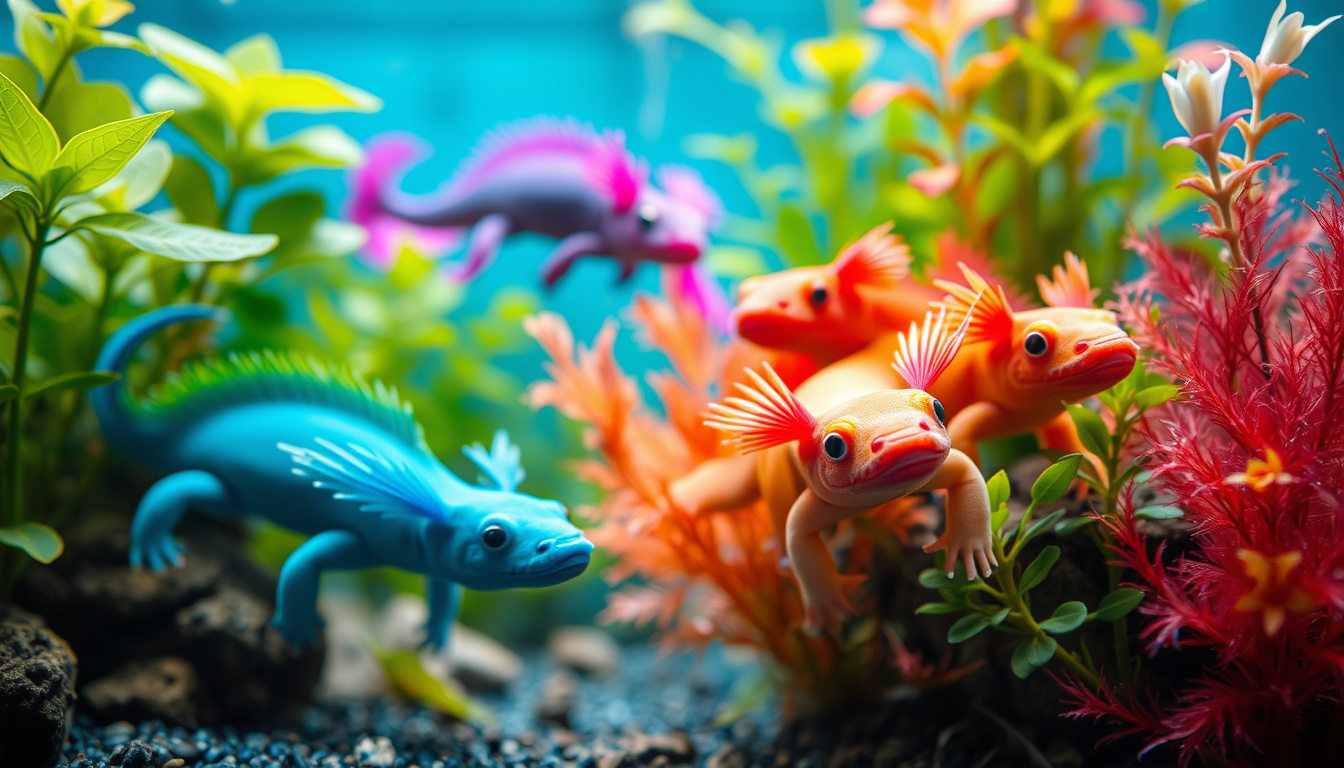Are you fascinated by the unique world of axolotls and considering diving into the rewarding journey of axolotl breeding techniques?
Whether you’re an aspiring aquarist or a seasoned pet owner, breeding these adorable amphibians can be an exciting and educational experience.
In this comprehensive guide, we will explore everything from the genetics of axolotls to creating the ideal breeding environment, ensuring you have the knowledge to successfully navigate the ins and outs of axolotl breeding.
Let’s jump right in!


Monitoring Axolotl Mating Behaviors
When diving into the fascinating world of axolotl breeding techniques, it’s essential to understand the unique mating behaviors of these remarkable amphibians.
Monitoring axolotl mating behaviors can be an enlightening experience, especially for young enthusiasts who are curious about these aquatic creatures.
Typically, the mating season occurs during spring when the water temperature rises.
Male axolotls engage in a series of courtship displays, including gentle nudges and spiraling dances, to attract females.
Observing these rituals can provide insights into their reproductive health and readiness.
Female axolotls, if receptive, will show interest by responding to males’ advances.
It’s crucial for aspiring breeders to create a suitable environment that mimics their natural habitat to encourage successful mating and ensure that both the males and females are in optimal health.
By closely monitoring these behaviors, you can become adept at employing various axolotl breeding techniques that enhance breeding success, ultimately allowing you to contribute to the conservation and appreciation of this unique species.
Caring for Axolotl Eggs and Hatchlings
Caring for axolotl eggs and hatchlings is an exciting part of axolotl breeding techniques that can be both rewarding and challenging.
Once your axolotls have mated and the eggs are laid, it’s crucial to provide the right environment for the developing embryos.
Make sure to keep the water temperature between 18 to 21 degrees Celsius (65 to 70 degrees Fahrenheit) and maintain excellent water quality to encourage healthy growth.
After about two weeks, the eggs will hatch into tiny larvae.
At this stage, it’s important to feed them specialized foods, like baby brine shrimp or finely crushed fish flakes, ensuring that they receive proper nutrition for their rapid growth.
Regular changes of their water will help prevent infections and support their development.
Understanding these essential aspects of axolotl breeding techniques will not only improve your success rates but will also enhance the joy of watching these unique creatures thrive.
Frequently Asked Questions
What specific genetics should I consider when breeding axolotls?
When breeding axolotls, it’s important to understand the inheritance patterns of their color mutations and traits.
Familiarize yourself with the different genetic variations, such as wild-type, leucistic, golden albino, and melanistic, to achieve desired traits in offspring.
What are the ideal conditions for an axolotl breeding environment?
To create an optimal breeding environment, maintain a water temperature of 60-64°F (16-18°C), provide a spacious tank with plenty of hiding spots, and ensure good water quality with regular filtration and maintenance.
What should I feed my axolotls to enhance their reproductive health?
A nutritious diet rich in protein is essential for reproductive health.
Offer a variety of foods such as earthworms, bloodworms, and specialized pellets to promote healthy growth and optimal mating conditions.
How can I tell if my axolotls are ready to mate?
Look for several signs of readiness in axolotls, such as males displaying courtship behaviors, like fanning their gills and performing a dance.
Additionally, females may appear plumper, indicating they are carrying eggs.
What are some common challenges in axolotl breeding and how can I overcome them?
Common challenges include fertility issues, egg fungus, and improper care of hatchlings.
To overcome these, ensure you maintain proper water conditions, provide a balanced diet, and promptly remove any uneaten food or decaying eggs to prevent fungal infections.
[center][/center]
[center][color=rgb(10, 10, 10)][highlight=rgb(255, 248, 231)] [/highlight][/color][color=rgb(10, 10, 10)][highlight=rgb(255, 248, 231)]As an Amazon Affiliate,[/highlight][/color][color=rgb(10, 10, 10)][highlight=rgb(255, 248, 231)] [/highlight][/color][color=rgb(10, 10, 10)][highlight=rgb(255, 248, 231)]Savvy Keto makes a commission[/highlight][/color][color=rgb(10, 10, 10)][highlight=rgb(255, 248, 231)] [/highlight][/color][color=rgb(10, 10, 10)][highlight=rgb(255, 248, 231)](at no extra cost to you)[/highlight][/color][color=rgb(10, 10, 10)][highlight=rgb(255, 248, 231)] [/highlight][/color][color=rgb(10, 10, 10)][highlight=rgb(255, 248, 231)]on purchases you make[/highlight][/color][color=rgb(10, 10, 10)][highlight=rgb(255, 248, 231)] [/highlight][/color][color=rgb(10, 10, 10)][highlight=rgb(255, 248, 231)]thru links on this site.[/highlight][/color][/center]

